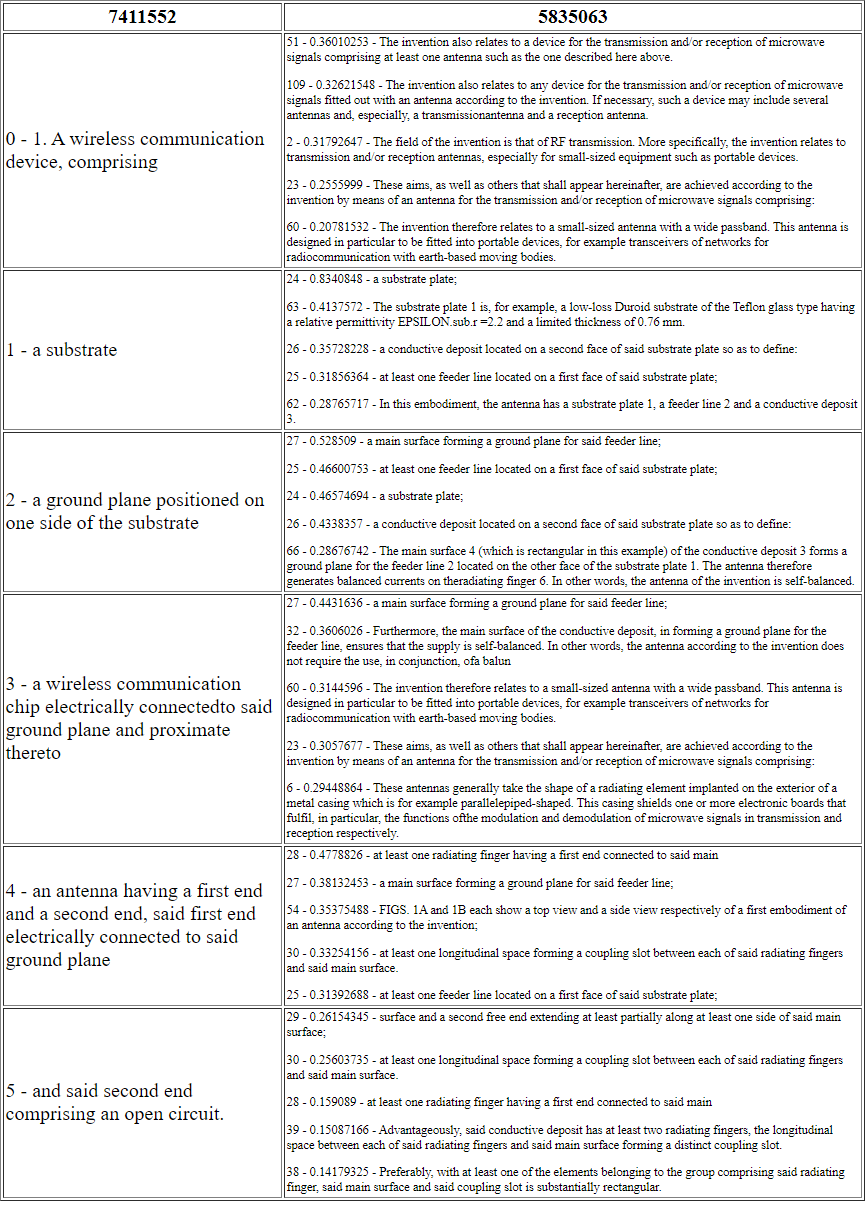Using Deep Neural Networks to Find Highly Relevant Unknown Prior Patents and Create Invalidity Charts
In my last post, Using Deep Neural Networks to Find the “Best” Known Cited Art and Create Claim Charts, I discussed analyzing the known art using deep neural networks. More often than not, the best art to apply against a patent has not been cited in the portfolio.
Deep neural network sentence encoders can be a very powerful tool to help you automate the process of reviewing and applying an inhuman number of potential invalidating references against patent claims in a short period of time.
After selecting claims to be analyzed and loading the claim into a vector of patent claim element language, a broad search term is created that generally relates to the claims. This search can be based on broad keyword queries, patent classification queries, or a combination of different factors. The search is also limited to patents that have a priority date prior to the claims under analysis. The search is run and the prior art reference patent or patent publication numbers are obtained.
As an example, a patent relating to an antenna, U.S. Patent 7,411,552, was recently asserted in a litigation. The patent is generally being asserted against a specific antenna configuration used in conjunction with “a wireless communication chip.”
A broad search of the relevant classification codes was conducted, and any known prior references were filtered out from the results. The asserted claim language was then compared to the specifications that were returned as part of the search results using the deep neural network sentence encoder technique.
On review of the resulting heat maps, one stood out due to a specific pattern that appeared.
The dark diagonal pattern indicates that this reference has strong sequential disclosure for a number of the asserted claim elements.
The resulting automatically generated claim chart shows that, U.S. Patent 5,835,063 paragraphs tagged 24 through 30 disclose a nearly identical set of claim limitations. Therefore, this reference, which was not of record in the ‘552 Patent portfolio, may be the basis for a strong 102 or 103 rejection.
Here, the deep neural network algorithm was able to uncover a previously uncited reference that appears to have strong sequential disclosure of asserted claim elements. This could potentially be the basis for a successful invalidity defense.
If you would like to explore this process further, contact JDB IP.






